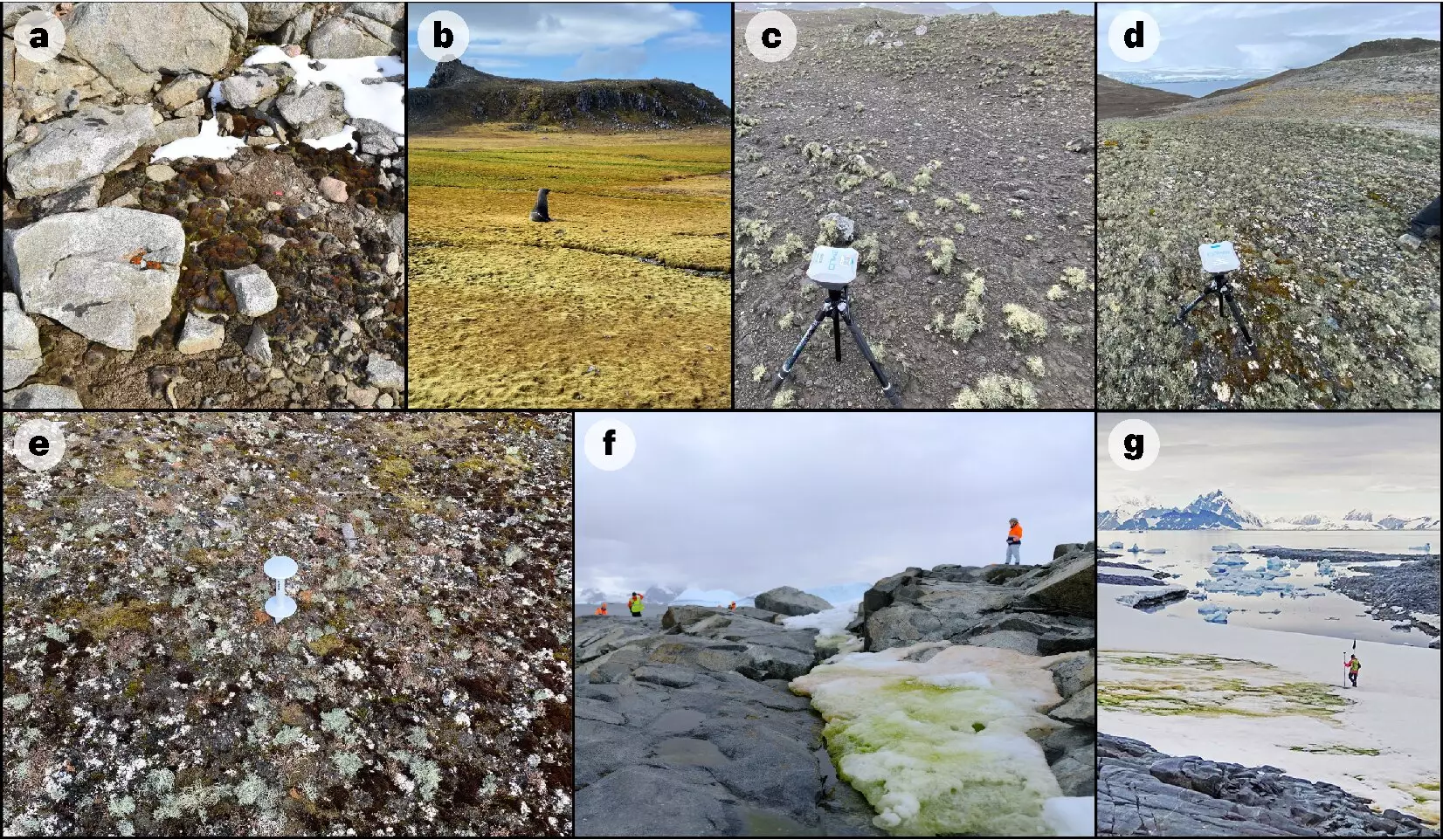Recent research has unveiled critical findings about the vegetation of Antarctica, utilizing advanced satellite technology to create the first comprehensive map of plant life across the continent. Published in *Nature Geoscience*, this pivotal study provides essential data that will inform conservation strategies in an area that is often overlooked in ecological discourse.
Conducted by a collaborative international research team spearheaded by the University of Edinburgh, the study assessed the extent of mosses, lichens, and algae in Antarctica. This scientific endeavor incorporated satellite imagery from the European Space Agency alongside field measurements collected over multiple summer research seasons. The findings revealed approximately 45 square kilometers of vegetation, a significant area comparable to three times the size of Lake Windermere in England. Such a revelation is not just impressive; it marks a critical turning point in our understanding of Antarctica’s ecological landscape.
Prior to this extensive analysis, the spatial coverage and abundance of Antarctic plant life were largely uncharted territories for researchers. The survey’s results highlight that over 80% of discovered vegetation is localized in the Antarctic Peninsula and surrounding islands. This concentration not only underscores the delicate distribution of plant life but also raises pressing questions about protective measures, especially considering that this growth accounts for a mere 0.12% of Antarctica’s total ice-free area.
The Importance of Vegetation in Climate Context
Understanding vegetation’s role in Antarctica goes beyond just mapping its location; it serves as a key indicator for broader environmental changes. The region’s flora, particularly lichens and mosses, has evolved to endure the extreme polar conditions. Their resilience presents a unique opportunity for scientists to monitor climate shifts. Given that these plants are sensitive to environmental changes, they can serve as effective biological markers for observing regional climate phenomena.
Charlotte Walshaw, a member of the research team, emphasized the transformative nature of this study: “Our continent-scale map provides key information on vegetation presence in areas that are rarely visited by people.” Such observations are crucial for devising targeted conservation initiatives aimed at protecting these resilient species. The information gathered not only serves to enhance our understanding of the distribution but gives insight into the ecological factors that govern this delicate balance.
Despite its remote location and widely acknowledged pristine environment, Antarctica’s vegetation is inadequately protected under existing conservation frameworks such as the Antarctic Specially Protected Area (ASPA) system. The research team unequivocally states that monitoring areas of high vegetation abundance is essential to ensure their future sustainability. The overwhelming growth of plant life, particularly in the vulnerable Antarctic Peninsula, presents a clear call to action for conservationists to reassess and strengthen the protective measures surrounding these ecosystems.
Scientists like Dr. Claudia Colesie have noted the critical ecological functions these organisms perform, reinforcing the argument for increased attention to their preservation. “Only the most resilient organisms can thrive there,” she asserted. Therefore, pinpointing their locations will allow for targeted efforts to safeguard species that have managed to adapt to life in some of the planet’s harshest conditions.
Employing remote sensing technology to study Antarctica’s fragile ecosystem represents a low-impact approach that notably reduces human interference while providing essential data. Dr. Andrew Gray pointed to the significance of this method, asserting that it not only facilitates the monitoring of existing vegetation but also serves as a framework for observing future ecological changes. This approach can potentially be replicated in other fragile ecosystems worldwide, offering insights into how various vegetation types may respond to climate change.
This pioneering mapping study not only sheds light on previously unknown dynamics of Antarctic plant life but also acts as a catalyst for further research and conservation efforts. By bridging the gaps in knowledge about this remote region’s ecological tapestry, scientists can better understand the implications of climate change on vegetation and, by extension, global ecosystems. The findings urge us to recognize the value of Antarctica’s unique flora and the pressing need to protect it for future generations.

